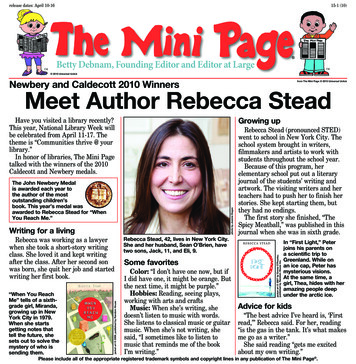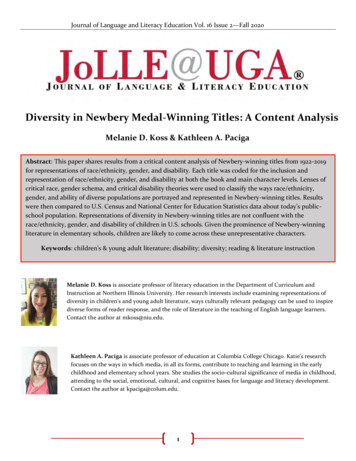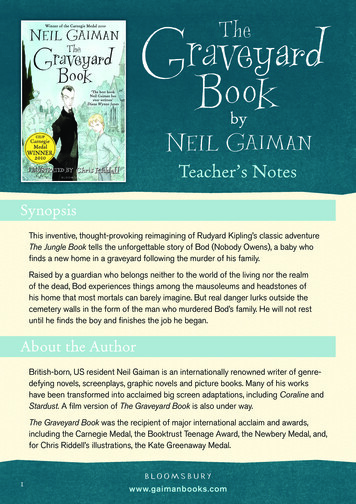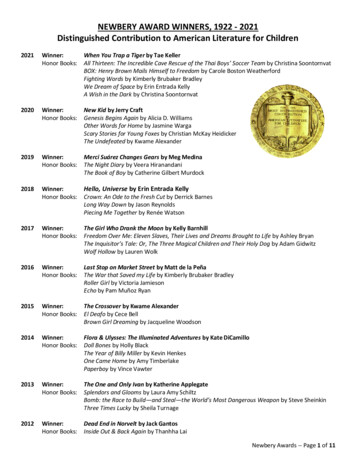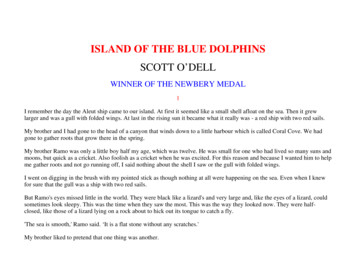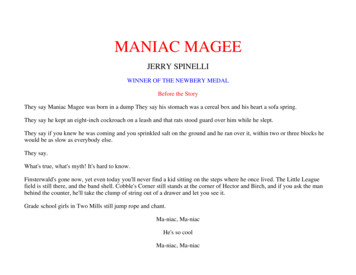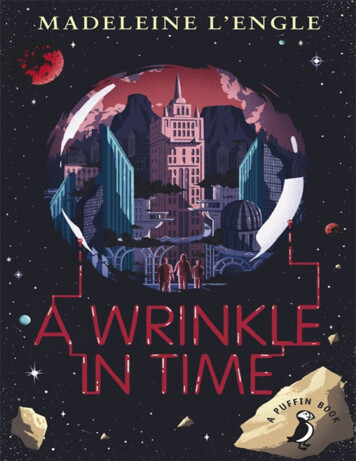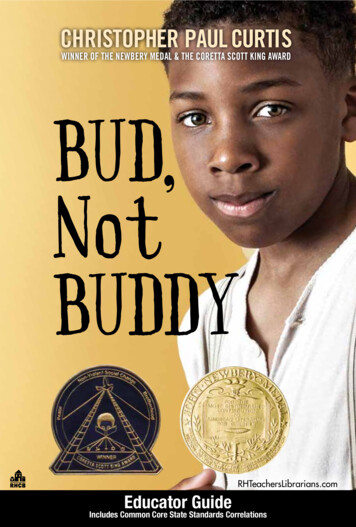
Transcription
CHRISTOPHERPAULCURTISWINNER OF THE NEWBERY MEDAL & THE CORETTA SCOTT KING AWARDBUDNotBUDDYRHTeachersLibrarians.comEducator GuideIncludes Common Core State Standards Correlations
Grades 4–7 MPB: 978-0-440-41328-8HC: 978-0-385-32306-2EL: 978-0-385-72995-6ABOUT THE BOOKDuring the Great Depression, a 10-year-oldhomeless boy sets out in search of a man he believesto be his father.Bud Caldwell’s mother died when he wassix years old, leaving him with nothing buta cardboard suitcase filled with memoriesand a possible hint of who his father may be.Now, 10 years old and on the run, Bud livesamong the homeless in Flint, Michigan,until he decides to walk to Grand Rapidsin search of his father. Helped by a few kindpeople along the way, Bud eventually locatesHerman E. Calloway, a famous musicianwho denies Bud’s claim that he is his father.Finally, the contents of Bud’s suitcaseprovide the clues necessary to prove thatCalloway is indeed related to Bud, but notin the way that Bud expects.
AWARDSThe Newbery MedalThe Coretta Scott King Author AwardThe IRA Children’s Book AwardPRE-READING ACTIVITYAsk students to research the causes of theGreat Depression. How did it affect families ofall socioeconomic levels? Tell them that Bud,the main character in the novel, is homelessand goes to a mission for a hot meal. Findout other types of organizations that helpedpeople during the Great Depression. Thenhave students find out what organizations intheir city or town provide food and shelterfor the homeless today. Create a brochurethat describes these organizations and theirservices. Correlates to Common Core Language Arts Standards—Writing: Text Types & Purposes W. 5-7.2; Production &Distribution of Writing W. 5-7.4; Research to Build & PresentKnowledge W. 5-7.7.VOCABULARY/USE OF LANGUAGEAsk students to find unfamiliar words andtry to define them from the context of thestory. Such words may include: urchins (p. 12),ingratitude (p. 14), vermin (p. 15), matrimonial(p. 56), devoured (p. 91), ventriloquists (p. 101),sully (p. 141), embouchure (p. 194), and prodigy(p. 196). Correlates to Common Core Language Arts Standards—Language: Vocabulary Acquisition & Use L. 5-7.4.QUESTIONS FOR DISCUSSIONFAMILY—Ask the class to discuss Bud’srelationship with his mother. What are someof his special memories of her? Why did hismother never tell him about his grandfather?Why do you think Bud’s mother left home?Changed her last name? If Bud’s mother wasso unhappy, why did she keep the flyers abouther dad’s band?SURVIVAL—Bud has been without a familysince age six. What type of survival skills doesBud learn at the Home? Make a list of “BudCaldwell’s Rules and Things for Having aFunner Life and Making a Better Liar Outof Yourself.” How does Bud use these rulesto survive difficult situations? Have the classdiscuss whether Bud will continue using theserules now that he has found a family.HOPE—Ask the class to discuss how the flyersin Bud’s suitcase give him hope. Bud’s motheronce told him, “When one door closes, don’tworry, because another door opens.” (p. 43)How does this statement give Bud the hopehe needs to continue his search for his father?Discuss the moments in the story when a doorcloses for Bud. At what point does the dooropen? Cite evidence in the novel that HermanCalloway had hope that his daughter mightreturn.RACISM—Engage the class in a discussionabout the different types of racism. Budencounters racism throughout his journey. Askstudents to explain Mrs. Amos’s statement:“I do not have time to put up with thefoolishness of those members of our race whodo not want to be uplifted.” (p. 15) How doesthis statement indicate that Mrs. Amos feelssuperior to Bud and other members of herrace? Why does she think that Bud does notwant to be uplifted? Correlates to Common Core Language Arts Standards—Reading: Key Ideas & Details RL. 5-7.1, 5-7.2, 5-7.3; Speaking& Listening: Comprehension & Collaboration SL. 5-7.1, 5-7.3;Presentation of Knowledge & Ideas SL. 5-7.4, 5-7.6.
CURRICULUM CONNECTIONSLANGUAGE ARTS—Bud has specialmemories of his mother’s reading to him.He remembers the little lessons that helearned from the fables that she read. Havestudents select one of “Bud Caldwell’s Rulesand Things for Having a Funner Life andMaking a Better Liar Out of Yourself” andwrite a fable, using the rule as the lessonlearned. Correlates to Common Core Language Arts Standards—Writing: Text Types & Purposes W. 5-7.3; Production &Distribution of Writing W. 5-7.4, W. 5-7.5.Explain to students that a euphemism is a wordused to soften the meaning of a word that maysuggest something unpleasant. For example,Bud says, “I don’t know why grown folkscan’t say someone is dead, they think it’s a loteasier to say gone.” (p. 178) Ask students tobrainstorm other euphemisms for dead. orrelates to Common Core Language Arts Standards—CLanguage: Vocabulary Acquisition & Use L. 5-7.4, 5-7.5Ask students to explain the metaphor, “Theidea that had started as a teeny-weeny seed ina suitcase was now a mighty maple.” (p. 146)What is the “seed”? The “mighty maple”? Askstudents to find other examples of figurativelanguage in the novel. Correlates to Common Core Language Arts Standards—Language: Vocabulary Acquisition & Use L. 5-7.5.SOCIAL STUDIES—John Dillinger, PrettyBoy Floyd, Baby Face Nelson, and J. EdgarHoover are among the notorious figuresmentioned in the book. Ask student to usesites on the Internet or books in the libraryto research these people and to find out whenthe FBI was formed. What is its primarypurpose? Who is the head of the FBI today?What names are currently on the FBI’s mostwanted list? How do their crimes compareto the “Most Wanted” criminals mentionedin the book? At one time, it was commonpractice to display Most Wanted flyers inpost offices. Have students create a MostWanted flyer for one of the criminals thatCurtis mentions. Include a picture from theInternet, a description of the crime, a rewardfor the capture, etc. Correlates to Common Core Language Arts Standards—Writing: Text Types & Purposes 5-7.3; Production & Distributionof Writing W. 5-7.4, 5-7.6; Research to Build & PresentKnowledge W. 5-7.7, 5-7.8.Policemen inspect Lefty Lewis’s car becausethey are searching for labor organizers who aresneaking to Grand Rapids from Detroit. Askstudents to use sites on the Internet or booksin the library to find out about the historyof labor unions and the existence of unionstoday. Then have the class debate the pros andcons of labor unions. Include graphics of poorworking conditions and labor union strikes. Correlates to Common Core Language Arts Standards—Speaking & Listening: Presentation of Knowledge and IdeasSL. 5-7.4, 5-7.5, 5-7.6.SCIENCE—Lefty Lewis sends HermanCalloway a telegram telling him aboutBud. Have students construct an illustratedtime line that shows the development ofcommunication from the invention of thetelegraph to today’s new technologies. Correlates to Common Core Language Arts Standards—History/Social Studies: Key Ideas & Details RH. 6-8.3;Integration of Knowledge & Ideas RH. 6-8.7.ART—It is obvious at the end of the novelthat Bud is being groomed as a band member.Design a flyer for Bud’s opening night withCalloway’s Band. Encourage students togive the band a new name in honor of Bud.Include a brief biography of Bud. Correlates to Common Core Language Arts Standards—Writing: Text Types & Purposes W. 5-7.2.
CURRICULUM CONNECTIONSCONTINUEDMUSIC—Entertainment played a major roleduring the Great Depression. One of Bud’sflyers describes Calloway’s Band as “Mastersof the New Jazz.” Ask students to find outwho the major jazz artists were during theGreat Depression. Why was jazz so importantduring this time period? Note that the author’sgrandfather was also a big band leader. Writea one-page entry on one of these jazz artistsfor a book called Jazz Artists of the Depression.Encourage peer editing for clarity, spelling,and grammar. Correlates to Common Core Language Arts Standards—Writing: Text Types & Purposes W. 5-7.3; Production &Distribution of Writing W. 5-7.5; Research to Build & PresentKnowledge W. 5-7.POST-READING ACTIVITYCONNECTING WITH THE MIGHTY MISS MALONEIn Bud, Not Buddy, Bud’s mother once told him, “When one doorcloses, don’t worry, because another door opens.” (p. 43) In TheMighty Miss Malone, the Malone family lives by a motto, “We areon a journey to a place called Wonderful.” (p. 11) Discuss howthese mottoes are those of hope. Ask students to discuss howBud and the Malone family find hope at the end of their journeys.Compare and contrast the obstacles they face.Bud is being groomed as a band member at the end of Bud, NotBuddy. Make Little Jimmie Jones the lead singer. Design a posterthat features Bud and Jimmie.Bud has been in search of family. Family is extremely important tothe Malones. Stage a dialogue between Jimmie and Bud where theydiscuss family.INTERNET RESOURCESALL ABOUT JAZZAllAboutJazz.comThis site provides information all about aspects of jazz, from its history to popular jazzartists today.THE GREAT /general-article/rails-added-obstaclesThis site provides an article about added obstacles for African Americans.
Christopher Paul Curtis was born in Flint, Michigan,and spent 13 years after high school on the assemblyline of Flint’s historic Fisher Body Plant #1, and wroteduring his breaks. He went to college part-time andgraduated from the University of Michigan. His firstnovel, The Watsons Go to Birmingham—1963 was botha Newbery Honor and a Coretta Scott King AuthorHonor book, and his second novel, Bud, Not Buddyreceived both the Newbery Medal and the Coretta ScottKing Author Award. Curtis says that his writing hasbeen greatly influenced by his family members.He makes his home in Detroit.ALSO AVAILABLEPrepared by Pat Scales, Director Children’s Literature Consultant, Greenville, South Carolina.Random House Children’s Books School and Library Marketing 1745 Broadway New York, NY 10019 BN1401 03/14Photo 2014 Lin Z. Jones, UM Photo ServicesABOUT THE AUTHOR
In Bud, Not Buddy, Bud's mother once told him, "When one door closes, don't worry, because another door opens." (p. 43) In The Mighty Miss Malone, the Malone family lives by a motto, "We are on a journey to a place called Wonderful." (p. 11) Discuss how these mottoes are those of hope. Ask students to discuss how


